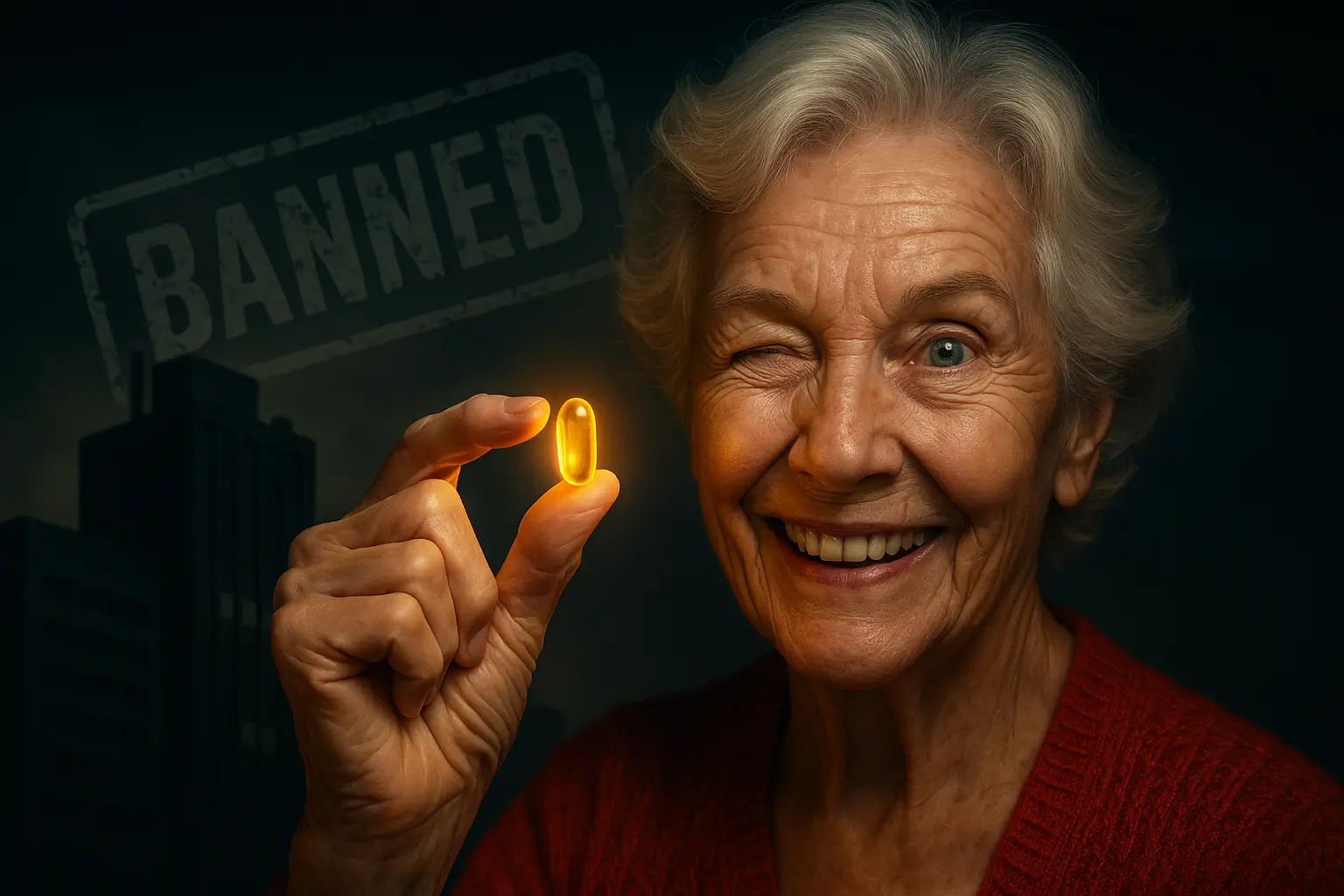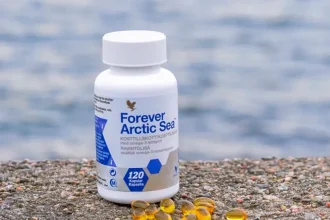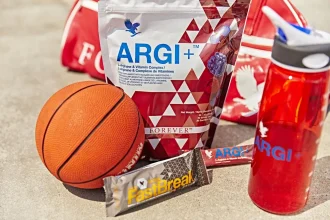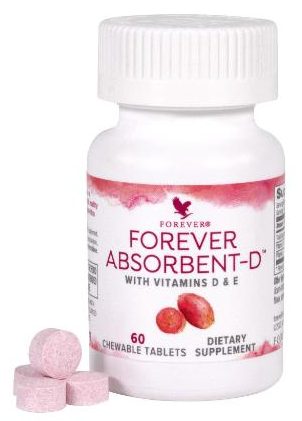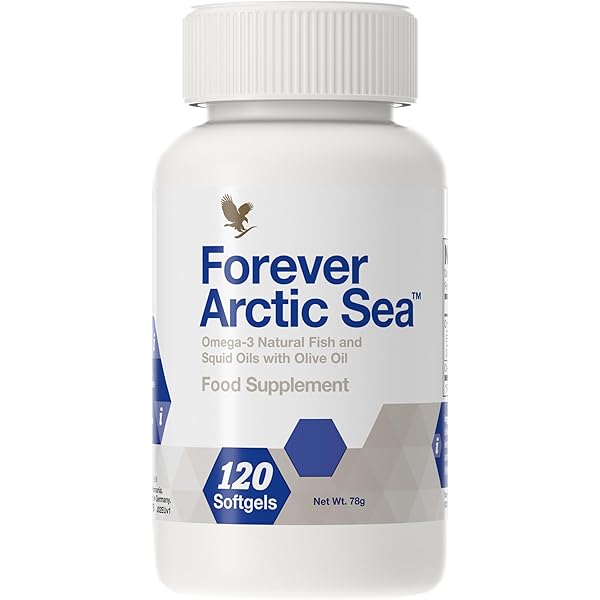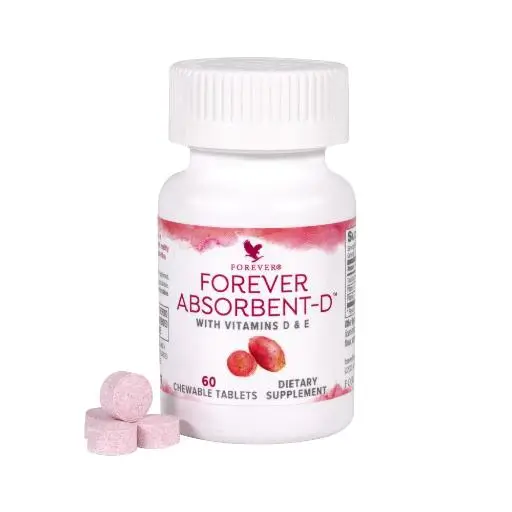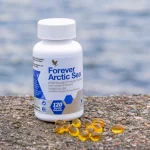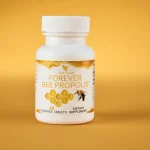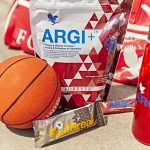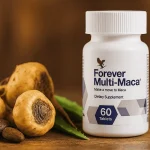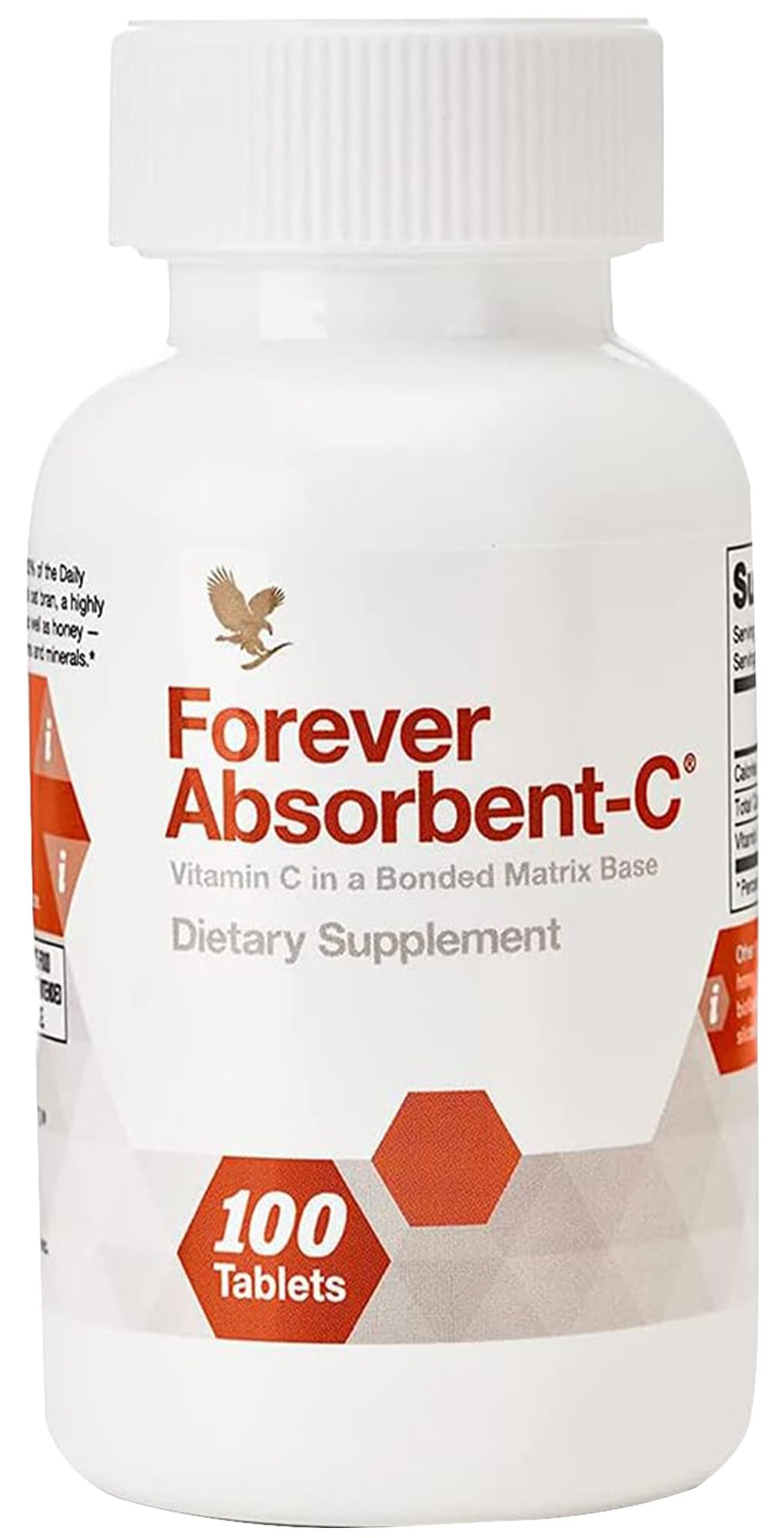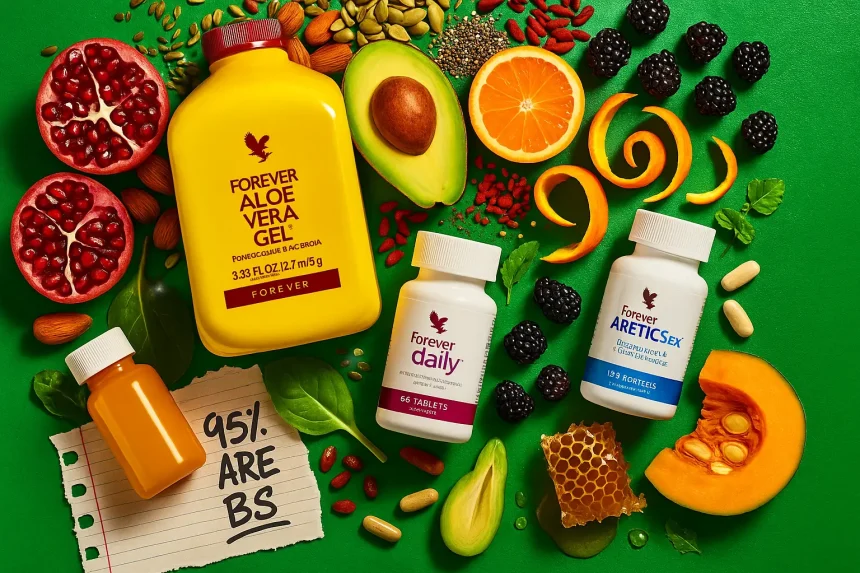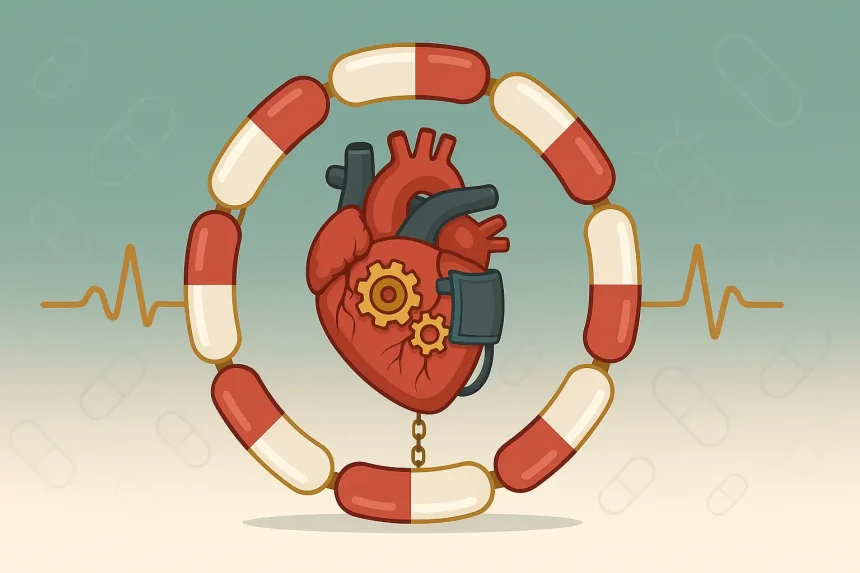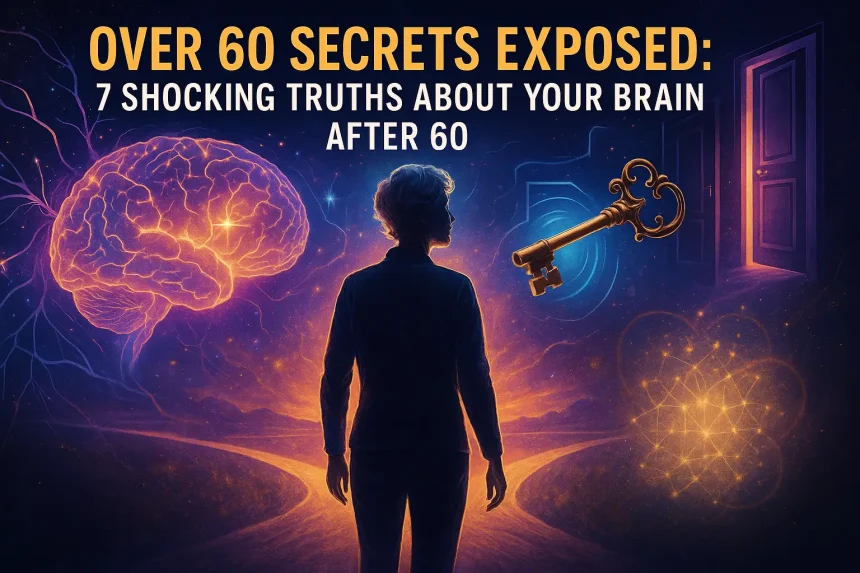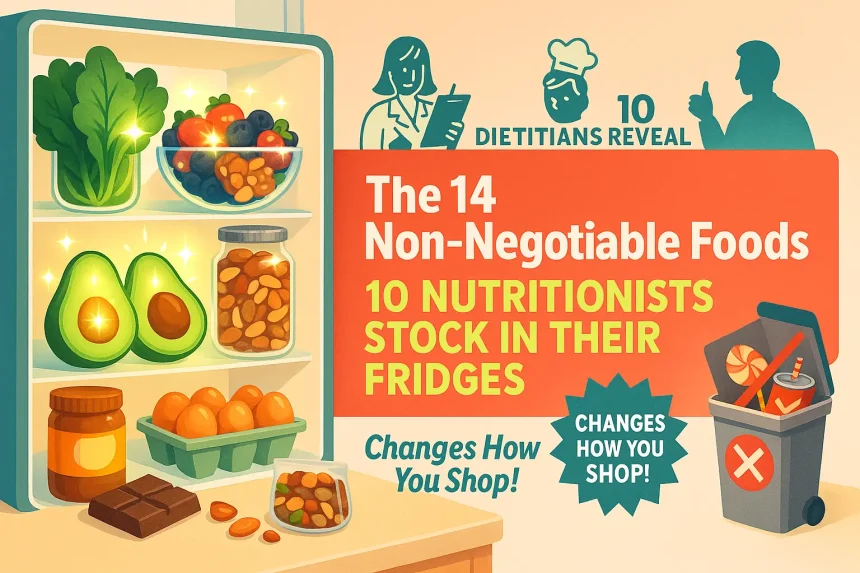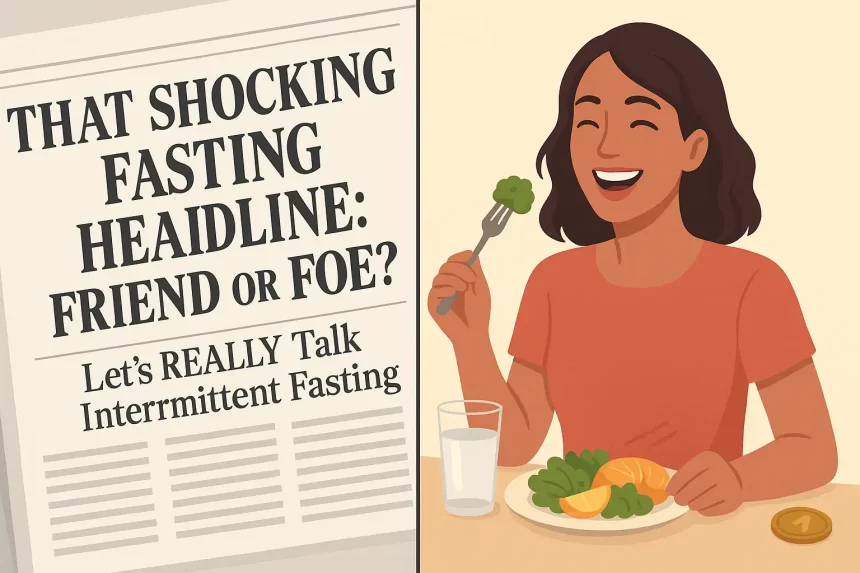What if everything you’ve been told about getting older is a carefully constructed lie? What if the relentless march of time, the aches, the pains, the fading vitality we’ve all been conditioned to expect, isn’t an inevitable sentence but a choice? The concept of truly slowing the aging process might sound like science fiction, a distant dream peddled by charlatans.
- The Age-Old Dream & The Modern Scientific Quest for Slowing the Aging Process
- The “Miracle” Unveiled – The Explosive Omega-3 Study That’s Changing Everything We Thought We Knew About Slowing the Aging Process
- Omega-3s – Your Secret Weapon for Slowing the Aging Process from the Inside Out
- The Dynamic Duo – Vitamin D and Exercise in Your Strategy for Slowing the Aging Process
- The Synergy Secret: Omega-3 + Vitamin D + Exercise = Your Triple-Threat for Slowing the Aging Process
- Your Roadmap to “Slowing the Aging Process” – Practical Steps & Optimizing Your Levels
- Beyond the “Miracle” – The Holistic View on “Slowing the Aging Process” & FAQs
- Your Invitation to a More Vibrant Future – Take the Leap with Vitaleap
But today, you’re about to stumble upon a story so shocking, so defiant of “normal,” it could shatter your reality – and it involves an 89-year-old grandma, a ridiculously simple $3 trick, and a secret so potent, the monolithic giants of Big Pharma are allegedly scrambling to keep it buried.
Imagine, for a moment, an 89-year-old woman. What picture comes to mind? Frailty? Dependence? A quiet existence confined by the perceived limitations of her years? Now, erase that image. Instead, picture Agnes (we’ll call her Agnes for privacy, because what she knows is too explosive for her quiet life).
Agnes isn’t just ‘getting by’ at 89. She’s thriving. We’re talking about a woman who still tends her own garden, shares infectious laughter with her great-grandchildren, and possesses a mental clarity that would put people half her age to shame. Friends and family whisper in awe.
Doctors scratch their heads, their medical textbooks offering no explanation for her extraordinary vitality. She’s not just aging gracefully; she’s practically thumbing her nose at death itself. And it all comes down to a disarmingly simple, almost laughably cheap “trick” she stumbled upon years ago.
Most of us watch the calendar pages fly by with a growing sense of dread, don’t we? We see our parents slow down, we feel our own energy dip, and we silently accept that this is just… the way it is.
The multi-billion dollar anti-aging industry preys on this fear, offering a never-ending parade of expensive creams that barely scratch the surface, or complex regimens that are impossible to maintain. We’re sold a narrative of decline, a slow surrender to the ravages of time.
But what if Agnes’s life isn’t an anomaly, but a testament to a truth that’s been deliberately obscured from us, a hidden pathway to genuinely slowing the aging process from the inside out?
Now, here’s where the story takes a sinister turn, the kind that makes you question who really pulls the strings when it comes to your health. Why on earth would a simple, affordable secret – a $3 trick, for crying out loud! – that can dramatically alter the course of aging, be something anyone would want suppressed? Think about it.
What happens to the colossal profits of pharmaceutical companies if people discover they can maintain vibrant health, sidestep age-related diseases, and dramatically extend their vigorous years without relying on a lifetime prescription of expensive, side-effect-laden medications?
What if the solution to slowing the aging process isn’t found in a patented pill, but in something readily available, something that empowers you instead of them?
They say “if it sounds too good to be true, it probably is.” But what if “they” are the very ones profiting from your skepticism? What if this isn’t just a story, but a lifeline? This isn’t about some mythical fountain of youth. This is about a real woman, a real, verifiable outcome, and a simple Omega-3 based method that costs less than your daily cup of fancy coffee.
A method that, according to hushed whispers and backdoor sources, has the pharmaceutical giants in an absolute panic because it threatens to upend their entire business model built on sickness, not wellness.
They don’t want you knowing you can potentially reclaim your youthfulness, boost your immunity, and fortify your body against the so-called “inevitable” decline of age for mere pennies.
In the article that follows, we’re going to pull back the curtain. We’ll dive deep into Agnes’s story, explore the science behind this astonishingly simple Omega-3 “trick,” and investigate the unsettling claims that there are powerful forces actively trying to discredit and bury this information.
You’re about to discover how you, too, might be able to tap into this remarkable secret and why this isn’t just about living longer, but living better, with the kind of energy and zest for life you thought was reserved for the young.
Prepare to have your beliefs about aging challenged, and your hope for a vibrant future reignited. What you learn next could change everything.
The Age-Old Dream & The Modern Scientific Quest for Slowing the Aging Process
Have you ever found yourself looking in the mirror and wondering where the time went?
Or maybe you’ve felt that subtle shift in energy, that little reminder that you’re not quite as spry as you used to be.
It’s a universal human experience, isn’t it? This thing called aging.
That question, that deep-seated desire to understand and perhaps even influence the aging process, has been with us for millennia.
Think about it. Ancient legends whispered tales of a Fountain of Youth, a magical spring that could turn back the clock. People have always searched for ways to live longer, feel younger, and maintain their vitality.
Fast forward to today, and that search is more intense than ever. We’re bombarded with news of “longevity” technologies – futuristic stuff like regenerative therapies, stem cells, gene manipulation, and even AI-generated health solutions.
It’s all very exciting, very cutting-edge.
But what if I told you that amidst all this dazzling technology, a profound breakthrough might come from something surprisingly… simple? Something almost ancient in its wisdom?
It’s a discovery that could fundamentally change how you think about getting older.
Now, before we dive into this “miracle,” let’s get on the same page about what we’re up against.
What is aging in humans, really?
Is it just the number of candles on your birthday cake? Or is it something deeper, something happening within your very cells?
The “aging definition in medical” terms often points to a progressive physiological decline in the body’s functions over time. Sounds a bit clinical, doesn’t it?
And if you ask “what is aging in biology,” scientists will tell you about telomere shortening, cellular senescence, oxidative stress… a whole host of intricate biological mechanisms. These are some of the fundamental “causes of aging.”
But for most of us, aging is much more personal.
It’s noticing those first grey hairs or fine lines. It’s feeling a little stiffer in the mornings. It’s perhaps worrying if you’ll have the energy and health to enjoy your later years, to keep up with your grandkids, or to travel the world.
It’s that nagging feeling that time is a thief, slowly robbing you of your youthfulness.
This feeling has fueled a multi-billion dollar “anti aging” industry, hasn’t it? Creams, lotions, potions, all promising to turn back time.
And while taking care of your appearance is wonderful, what if we could aim for something more profound?
What if we could focus on “aging gracefully,” not by just masking the signs, but by addressing the root aging process itself? By nurturing our bodies from the inside out to maintain that vibrant, youthful energy for as long as humanly possible.
That’s the real quest, isn’t it? Not just to look younger, but to feel younger, to have the healthspan that matches our lifespan.
And that’s where this glimmer of hope I mentioned comes in.
Because amidst the complex and sometimes overwhelming information out there, new research is pointing towards a remarkably accessible tool in our fight for the aging process.
It’s something that doesn’t require a futuristic lab or a billionaire’s budget.
It’s something that, quite frankly, has been hiding in plain sight.
Are you curious? You should be.
What are the benefits of omega-3, 6 and 9?
- Omega-3s: As we’ve detailed, they are primarily anti-inflammatory and crucial for brain, heart, eye, and cellular health, playing a key role in slowing the aging process.
- Omega-6s: These are also essential fatty acids (your body can’t make them). They play roles in brain function, skin and hair growth, bone health, and regulating metabolism. Linoleic acid is a common Omega-6. While essential, the typical Western diet often contains an excess of Omega-6s compared to Omega-3s, which can be pro-inflammatory. The key is a healthy balance between Omega-6s and Omega-3s.
- Omega-9s: These are monounsaturated fats, like oleic acid found in olive oil. Your body can produce Omega-9s, so they aren’t strictly “essential.” However, they are very beneficial for heart health, helping to reduce bad cholesterol (LDL) and increase good cholesterol (HDL). They also have anti-inflammatory properties.
A supplement like Forever Arctic Sea® thoughtfully includes Omega-9 (oleic acid from olive oil) alongside its Omega-3s, which helps promote a beneficial fatty acid profile.
Can I take vitamin C and omega-3 together?
Yes, you can definitely take Vitamin C and Omega-3s together. There are no known negative interactions. Both are important nutrients that support different aspects of health. Vitamin C is a powerful antioxidant and crucial for immune function and collagen production, while Omega-3s work on inflammation, brain health, and heart health. They can be part of a complementary supplement regimen.
What is the best multivitamin for men? / What is the best multivitamin for (women – implied)?
The “best” multivitamin provides a comprehensive range of essential vitamins and minerals in bioavailable forms, without excessive megadoses of any single nutrient (unless specifically needed and medically advised).
For both men and women, a good general adult multivitamin like Forever Daily™ is an excellent choice because it’s formulated to help bridge common nutritional gaps. It includes essential vitamins (A, C, D, E, K, B-complex) and minerals (like zinc, selenium, chromium, iron in appropriate amounts), often with added phytonutrients or antioxidant blends from fruits and vegetables.
Specific needs can sometimes vary (e.g., iron requirements for premenopausal women), but a well-balanced formula usually provides a solid foundation for overall health.
Is fish oil good for men?
Yes, fish oil (which is rich in Omega-3s) is very good for men. Benefits specific to men can include strong support for cardiovascular health (men are often at higher risk for heart disease), promoting prostate health, aiding in exercise recovery due to its anti-inflammatory effects, and supporting cognitive function and mood.
Who should not take fish oil?
While generally safe, some individuals should exercise caution or avoid fish oil supplements unless cleared by their doctor:
- People with fish or shellfish allergies (though highly purified fish oils may be tolerated by some, an algae-based Omega-3 would be a safer alternative).
- People taking blood-thinning medications (e.g., warfarin, heparin, aspirin, clopidogrel) due to the potential increased risk of bleeding.
- People with bleeding disorders.
- Individuals scheduled for surgery (it’s often recommended to stop fish oil supplements 1-2 weeks before surgery).
Always discuss with your doctor if you have any pre-existing conditions or are taking other medications.
Because what you’re about to discover could be a game-changer for how you approach your health, your vitality, and your journey through the years.
Stay with me, because we’re about to unpack a study that’s making even seasoned doctors sit up and take notice. This is where the science gets really interesting.
The “Miracle” Unveiled – The Explosive Omega-3 Study That’s Changing Everything We Thought We Knew About Slowing the Aging Process
So, where did this bombshell revelation come from?
It wasn’t just a casual observation or a flimsy internet claim. No, this was serious science.
We’re talking about a study published in a highly respected scientific “aging journal” called Nature Aging. When findings appear here, the scientific community pays close attention.
And believe me, this one sent shockwaves.
Researchers at the renowned University of Zurich in Switzerland were the brilliant minds behind it. These folks weren’t just looking for another minor improvement in health.
They were hunting for something bigger. Something that could fundamentally impact how we age at a molecular level.
They already had clues, you see. Their previous work had shown that a combination of omega-3 fatty acids, Vitamin D, and regular exercise could slash the risk of infections, nasty falls, cancer, and even premature frailty in seniors.
That’s pretty impressive on its own, right?
But they had a bigger question burning in their minds: could these interventions actually slow down the aging process itself, deep within our cells?
So, what did they do? How did they even begin to measure something as complex as the speed of aging?
Let me break it down for you, because it’s fascinating stuff.
They gathered a group of 777 healthy, active Swiss seniors. These were people aged 70 or older, still living vibrant lives, hailing from five different European countries.
These weren’t couch potatoes; they were already part of a significant medical trial called the DO-HEALTH trial.
The researchers then, very cleverly, decided to test a few things, both alone and together.
Some participants received a daily dose of omega-3 fatty acids. We’re talking just one gram a day, specifically from a marine algae source. This provided 330 mg of EPA and 660 mg of DHA – you’ll learn more about these powerhouses later. Think of it as about a teaspoon of this special oil.
Others were given Vitamin D – 2000 International Units (IU) daily, a pretty standard supplemental dose.
And a third group was assigned a simple home exercise program, focusing on strength and balance, for just 30 minutes, three times a week.
Of course, to make sure the results were real, they had comparison groups receiving placebos or doing a control (stretching/flexibility) exercise routine. This is gold-standard science.
Now, here’s where it gets really cool. How did they measure if someone was aging slower?
They used something called “internal aging clocks.”
Sounds like something out of a sci-fi movie, right? But it’s very real.
These clocks don’t track your birthdays. Instead, they track tiny chemical changes happening on your DNA molecules – specifically, something called DNA methylation.
These changes act like little signposts, revealing how fast your body is biologically aging.
So, you could be 70 years old according to your birth certificate, but your biological age – the true age of your cells – might be significantly younger… or older.
Imagine your doctor being able to tell you that, on the inside, your cells are functioning like those of someone years younger! That’s the kind of insight these aging clocks provide.
The researchers took blood samples at the beginning of the trial and then followed these groups for three years, with regular check-ins.
After three years, they analyzed the blood again using four different validated internal aging clocks. They wanted to be thorough.
And the results? Well, they were nothing short of stunning.
Finding #1: Omega-3s ALONE Moved the Needle!
Yes, you read that right. That simple, single gram of omega-3 fatty acids per day, all on its own, showed it could significantly slow down biological aging.
How much? The study indicated it could slow the aging process by an average of up to four months over that three-year period.
Now, you might think, “Four months? Is that a big deal?”
Think about it this way: this was in just three years. What could the cumulative effect be over five years, ten years, or even a lifetime of consistent intake? It’s a powerful indicator.
It suggests that this simple oil could be helping your cells stay younger, longer. This is a cornerstone of slowing the aging process.
Finding #2: Vitamin D or Exercise Alone Didn’t Show the Same Direct Cellular Slowdown.
This was an interesting finding. While Vitamin D and exercise are undeniably crucial for overall health (and, as we’ll see, part of the bigger picture), in this specific study, when used alone, they didn’t demonstrate the same direct effect on these particular DNA aging clocks.
This really highlights the unique role that omega-3 fatty acids seem to play at this fundamental, cellular level of aging.
Finding #3: But Hold On… The Real Magic Happened with The COMBINATION!
This is where it gets incredibly exciting.
When the researchers looked at the group receiving all three interventions – the omega-3 fatty acids, the Vitamin D, AND the simple home exercise program…
Bingo!
The age-slowing benefit was even more significant than with omega-3 alone.
This is a massive clue! It tells us that while Omega-3s are powerful, a holistic approach that combines these key elements can create a synergy, a multiplied effect, in our quest for slowing the aging process.
It’s like each one boosts the others, creating a result greater than the sum of its parts.
And there was another crucial insight from the study…
Participants who started with lower levels of omega-3 in their blood at the beginning of the trial? They saw the LARGEST benefits!
This is so important. It suggests that many people might be walking around with suboptimal Omega-3 levels, completely unaware that they’re missing out on these profound age-slowing, health-boosting effects.
Could that be you?
Beyond just the aging clocks, the omega-3 supplementation also showed other positive changes, like reducing inflammatory proteins in the bloodstream. And as you’ll soon learn, inflammation is a major driver of the aging process.
Now, the researchers, being good scientists, are cautious. They state the study is “suggestive” and doesn’t absolutely “prove” cause and effect for a longer life – not yet, anyway. Science takes time to build absolute proof.
But let’s be clear: these findings are incredibly promising.
“Four months” of slowed biological age in just three years, observed across multiple validated aging clocks, regardless of the participant’s gender, initial age, or BMI? That’s a powerful signal.
The authors themselves proposed that these interventions – especially when combined – work their magic by modifying that DNA methylation we talked about, powerfully reducing inflammation, enhancing immune function, and helping to regulate metabolism.
This isn’t just wishful thinking anymore. This is tangible, measurable science pointing the way towards real strategies for slowing the aging process.
It’s like we’ve been given a peek at the body’s instruction manual for staying younger, and omega-3 fatty acids are a key chapter.
What fruit is very high in omega-3?
Technically, fruits are not primary sources of Omega-3s, especially the EPA and DHA forms. Plant-based Omega-3 (ALA) is found in seeds and nuts. However, some fruits are part of an overall healthy diet that supports Omega-3 absorption and function.
For instance, avocados are rich in healthy monounsaturated fats (Omega-9s) which are beneficial. Berries (like blueberries, strawberries, raspberries) are packed with antioxidants that work synergistically with Omega-3s to combat oxidative stress and inflammation, which are drivers of the aging process.
So, while not “high in Omega-3s” themselves, they are excellent partners in an anti-aging diet.
Does milk have omega-3?
Standard cow’s milk is not a significant natural source of Omega-3 fatty acids. However, some brands of milk are now fortified with EPA and DHA (usually from fish oil or algal oil) to boost their nutritional profile.
If you’re looking for Omega-3s in milk, you’ll need to check the label specifically for “fortified with Omega-3s” or look for the amounts of EPA/DHA listed in the nutrition facts.
How many times a week should I eat fish for omega-3?
For healthy adults, most major health organizations like the American Heart Association recommend eating fatty fish at least two times per week to get an adequate intake of EPA and DHA.
A serving is typically around 3.5 ounces cooked, or about ¾ cup of flaked fish. If you don’t regularly eat fish, a quality Omega-3 supplement is a good way to ensure you’re getting these vital nutrients.
Excited yet? You should be! Because we’re just getting started. Next, we’re going to dive even deeper into why these Omega-3s are such cellular heroes.
Okay, let’s keep this momentum going! We’ve seen the stunning study, now let’s get up close and personal with the star of the show: Omega-3s.
Omega-3s – Your Secret Weapon for Slowing the Aging Process from the Inside Out
So, we’ve seen the headlines, we’ve seen the science from that incredible Swiss study. Omega-3 fatty acids are clearly a big deal when it comes to slowing the aging process.
But you might be wondering, “Okay, that’s great, but what is Omega-3 good for, specifically? How does it actually work its magic inside me?”
Great questions! Let me pull back the curtain for you.
Beyond what that groundbreaking Nature Aging study revealed about turning back your biological clock, the list of omega 3 benefits is truly impressive. We’re talking improved heart health, sharper brain function, a more balanced mood, even better eye health.
But today, our focus is laser-sharp on its incredible power in slowing the aging process. And it does this in several fascinating ways.
First, Omega-3s are like the five-star generals in the war against inflammation.
You’ve probably heard that chronic inflammation is a silent enemy, right? It’s like a slow, smoldering fire inside your body that accelerates aging and contributes to a host of age-related diseases.
Well, omega-3 fatty acids are potent anti-inflammatory agents. They help to cool that fire.
They do this by influencing the production of eicosanoids – signaling molecules in your body – steering them away from pro-inflammatory pathways and towards anti-inflammatory ones. They specifically help reduce inflammatory cytokines like Il-6 and TNF-α, which are known troublemakers that can speed up cellular aging.
Think of Omega-3s as the calm, cool peacemakers arriving on a chaotic scene within your cells.
Second, they help protect your precious telomeres.
Now, what on earth are telomeres?
Imagine the little plastic tips on the ends of your shoelaces. Those tips stop the laces from fraying, right?
Telomeres are similar. They are protective caps on the ends of your chromosomes (where your DNA is stored). Every time your cells divide, these telomeres can get a little shorter. Shorter telomeres are a hallmark of aging.
Here’s the exciting part: research suggests that omega-3 fatty acids can help protect these telomeres, potentially by reducing oxidative stress and inflammation that can damage them.
Longer, healthier telomeres mean your cells can stay younger and function better for longer. This is a fundamental aspect of “what is aging in biology” and how we can influence it.
Third, Omega-3s play a role in healthy insulin regulation.
You might associate insulin with blood sugar, and that’s correct. But imbalances in insulin levels can also contribute to inflammation and metabolic issues that accelerate the aging process.
Omega-3 fatty acids can help improve insulin sensitivity, meaning your body can use insulin more effectively. This helps maintain metabolic balance, which is crucial for slowing the aging process.
Fourth, as that new study highlighted, Omega-3s can beneficially modify plasma proteins linked to longevity.
Remember the study mentioned changes in things like leptins and plasminogen activation factors? These are complex-sounding names, but the takeaway is simple: Omega-3s seem to be fine-tuning your body’s internal chemistry in ways that promote cellular youthfulness.
It’s like they’re helping to keep the cellular orchestra playing a harmonious, youthful tune.
The Omega-3 Family: Meet EPA, DHA, and ALA.
It’s important to know that “Omega-3” isn’t just one single thing. It’s a family of essential fatty acids. Your body can’t make them in sufficient amounts, so you must get them from your diet or supplements.
The main players you’ll hear about are:
- EPA (Eicosapentaenoic Acid): This one is a real champion when it comes to fighting inflammation and supporting heart health. It’s also linked to mood benefits.
- DHA (Docosahexaenoic Acid): Think “brain health” when you think of DHA. It’s a major structural component of your brain and retina. It’s vital for cognitive function, memory, and eye health, especially as we age.
- ALA (Alpha-Linolenic Acid): This is the plant-based Omega-3, found in things like flaxseeds and walnuts. Your body can convert ALA into EPA and DHA, but the conversion process isn’t very efficient. That’s why getting EPA and DHA directly is often recommended.
So, “which type of omega-3 is best?” For the most powerful benefits related to slowing the aging process, brain health, and heart health, a good supply of both EPA and DHA is generally considered ideal, primarily from marine sources.
“Omega 3 Benefits for Women” and “Omega 3 Benefits for Men” – Everyone Wins!
The advantages aren’t one-size-fits-all; they cater to specific needs too.
For women, omega 3 benefits can include supporting hormonal balance, promoting healthy skin (yes, “is omega-3 good for skin?” – absolutely, and we’ll touch on that more!), and contributing to bone density, which is crucial post-menopause.
For men, “omega 3 benefits for men” include powerful cardiovascular support, promoting prostate health, and maintaining that cognitive edge and mental sharpness. So, “is fish oil good for men?” The science overwhelmingly says YES!
Fueling Up: The Best “Omega 3 Foods” to Pile on Your Plate.
Alright, enough theory! You want to start slowing the aging process with delicious food, right? Let’s talk about the best “omega 3 foods.”
- Fatty Fish are Your Friends: This is where you get the most potent EPA and DHA.
- Salmon (wild-caught is a great choice)
- Mackerel (a powerhouse of Omega-3s)
- Herring
- Sardines (don’t underestimate these little guys!)
- Albacore Tuna (choose sources that are lower in mercury)
- “How many times a week should I eat fish for omega-3?” Aim for at least two, preferably three, servings. This directly answers “what is omega-3 fish good for?”—it’s good for getting these direct-acting fatty acids!
- Plant-Powered Options (“Omega 3 Foods Vegetarian”): These are rich in ALA.
- Flaxseeds (make sure to grind them, or your body can’t access the goods!)
- Chia seeds (these tiny seeds are nutritional giants – soak them for a great pudding!)
- Walnuts (a fantastic heart-healthy snack)
- Hemp seeds
- Soybeans (edamame) and canola oil (use these oils in moderation).
“What fruit is very high in omega-3?” Generally, fruits aren’t the primary stars for Omega-3s. Avocados offer healthy fats, and berries are packed with antioxidants that also fight aging, making them great dietary partners.
“Does milk have omega-3?” Some brands are fortified with Omega-3s (usually EPA/DHA), but it’s not naturally present in significant amounts. Always check the label.
The Supplement Solution: When Diet Isn’t Enough, Turn to High-Quality “Omega 3 Supplements.”
Now, let’s be perfectly honest. In our fast-paced, modern lives, consistently eating enough Omega-3-rich foods to reach optimal levels can be a real challenge.
Remember that shocking statistic from the original article? “Merely 2% of Americans have omega-3 levels within the optimal range!” Two percent! That means 98% of people could potentially be missing out on these incredible benefits for slowing the aging process.
This is where high-quality “omega 3 supplements,” like “omega 3 capsules” or “omega 3 tablets,” can be an absolute game-changer.
“What will happen if I take omega-3 everyday?” For most people, taking a quality Omega-3 supplement daily means consistently supplying your body with these essential fats to support all the amazing benefits we’ve been discussing – from cellular health to brain function and beyond. (Naturally, if you have health conditions or are on medication, a quick chat with your doctor is always wise).
But here’s the key: not all supplements are created equal. You don’t want just any old “omega 3 fish oil.” You want purity, potency, and the right blend of beneficial fatty acids.
This is where I confidently recommend considering Forever Arctic Sea®.
Why this specific one when you’re searching for the “best omega 3 supplement”?
Because Forever Arctic Sea® isn’t just your standard fish oil. It’s a thoughtfully crafted blend.
It provides a balanced source of both EPA and DHA from a carefully selected blend of oils from fish like anchovy, salmon, and cod. This unique profile ensures you’re getting these crucial Omega-3s that are so vital for slowing the aging process.
But what makes it stand out even more is that it also includes Oleic Acid, which is an Omega-9 fatty acid, sourced from olive oil. Omega-9s are fantastic for supporting healthy cholesterol levels and overall cardiovascular health. This combination of Omega-3s with Omega-9 provides a broader spectrum of support that you simply don’t find in many basic “omega 3 fish oil” supplements.
Think of Forever Arctic Sea® as your convenient, high-quality way to bridge that nutritional gap and ensure your body has the resources it needs to fight inflammation, protect your cells, and support your journey towards slowing the aging process. It’s designed with a pleasant citrus flavor and aroma to minimize any fishy aftertaste, a common concern with some “omega 3 capsules.”
Dosage, Details, and Dilemmas: “How Much Omega 3 Per Day?”
The National Institutes of Health generally recommends adults consume around 1.1 to 1.6 grams of total Omega-3s daily. The DO-HEALTH study we discussed used 1 gram of combined EPA and DHA.
“How many omega-3 pills per day?” This will always depend on the concentration of the specific supplement you choose. With Forever Arctic Sea®, the recommended serving size is clearly stated on the label, designed to provide an effective amount of these vital nutrients.
“Can I take omega-3 at night?” Absolutely. The timing isn’t critical. Many people prefer to take it with a meal to enhance absorption and minimize any potential for “fishy burps”—though with a high-quality product like Forever Arctic Sea®, this is much less of an issue.
“Can I take omega-3 on an empty stomach?” Some people do without issue, but taking it with food is generally a good practice.
“Does omega-3 have side effects?” For most people, omega 3 supplements are very safe. The most common, though rare with quality products, might be a fishy aftertaste or mild digestive upset. Very high doses can have blood-thinning effects, so if you’re on blood-thinning medication or have a bleeding disorder, it’s essential to talk to your doctor. This also answers “who should not take fish oil?” without proper medical guidance.
The Glow-Up Secret: “Is Omega-3 Good for Skin?”
You bet it is! Your skin loves Omega-3s. These fatty acids are crucial for maintaining the health of your skin cell membranes. They help keep your skin hydrated, supple, and can reduce inflammation associated with conditions like acne, eczema, or psoriasis.
Think of it as an internal moisturizer and protector, helping you achieve that healthy glow that contributes to “aging gracefully.” It perfectly complements any efforts with the “best moisturizer for aging skin” by working from the inside out.
Are You Missing Out? “What are the Symptoms of Lack of Omega-3?”
Since Omega-3s are involved in so many bodily functions, deficiency symptoms can be varied and sometimes vague. They might include:
- Dry, rough, or scaly skin, and brittle hair or nails.
- Fatigue and trouble sleeping.
- Poor concentration or memory issues (“brain fog”).
- Mood swings or symptoms of depression/anxiety.
- Joint pain or stiffness due to increased inflammation.
If any of these sound familiar, it might be worth evaluating your Omega-3 intake.
The Omega Trio: Understanding “Omega 3 6 9.”
You often see supplements labeled with “omega 3 6 9.” So, “what are the benefits of omega-3, 6 and 9?“
- Omega-3s: As we’ve extensively covered, these are largely anti-inflammatory and crucial for brain, heart, and cellular health.
- Omega-6s: These are also essential fatty acids, found in many vegetable oils, nuts, and seeds. They play roles in brain function and skin health. However, the typical Western diet often provides an excess of Omega-6s relative to Omega-3s, which can actually promote inflammation. The goal is a healthy balance.
- Omega-9s: These are monounsaturated fats, like oleic acid found in olive oil. Your body can produce Omega-9s, so they’re not technically “essential,” but they are very beneficial for heart health and reducing inflammation.
The beauty of a supplement like Forever Arctic Sea® is its thoughtful inclusion of Omega-9 from olive oil alongside the critical Omega-3s, helping to promote a healthier fatty acid profile overall.
Phew! That was a deep dive into the world of Omega-3s, wasn’t it?
You can now see why these essential fats are more than just a “nice-to-have.” They are fundamental players in your body’s ability to maintain health, vitality, and importantly, to engage effectively in slowing the aging process.
But remember that Swiss study? Omega-3s were just one part of the “magic bullet” combination. Next up, let’s explore the equally vital roles of Vitamin D and exercise!
Okay, we’ve explored the incredible power of Omega-3s, your cellular heroes in the quest for slowing the aging process.
But if you recall that groundbreaking Swiss study, Omega-3s weren’t acting entirely alone when the most significant results were seen. They had some crucial allies.
Which type of omega-3 is best?
The “best” type depends on your goals, but for most of the significant health benefits, including those related to slowing the aging process, EPA and DHA from marine sources (like fish oil or algae oil for vegetarians/vegans) are generally considered the most effective.
ALA from plant sources is still beneficial, but the body’s conversion of ALA to EPA and DHA is limited. A good supplement, like Forever Arctic Sea®, will provide a healthy dose of both EPA and DHA.
Does omega-3 have side effects?
Omega-3 supplements are generally well-tolerated. When side effects do occur, they are usually mild and can include:
- A fishy aftertaste or “fish burps” (less common with high-quality, purified supplements).
- Digestive upset like nausea or diarrhea, especially at higher doses.
Omega-3s can have a mild blood-thinning effect. So, if you take blood-thinning medications (like warfarin), have a bleeding disorder, or are scheduled for surgery, it’s crucial to talk to your doctor before taking Omega-3 supplements. The Mayo Clinic provides a good overview of fish oil safety and side effects.
How many omega-3 pills per day?
This depends entirely on the concentration of EPA and DHA in each pill or capsule. There’s no one-size-fits-all answer in terms of “number of pills.” Focus on the amount of EPA and DHA you’re getting.
General recommendations often range from 250-500 mg of combined EPA and DHA per day for healthy adults, with higher amounts sometimes recommended for specific conditions (under medical guidance).
The DO-HEALTH study used 1 gram (1000 mg) of combined EPA and DHA daily. Always check the supplement label for the EPA/DHA content per serving and follow the suggested use.
Is omega-3 good for skin?
Yes, Omega-3s are fantastic for your skin! They help maintain the integrity of cell membranes, keeping skin cells healthy and hydrated. Their anti-inflammatory properties can help soothe conditions like eczema, psoriasis, and acne.
By supporting skin barrier function and elasticity, Omega-3s contribute to a smoother, more youthful complexion – a natural approach to looking good as you pursue slowing the aging process.
What are the symptoms of lack of omega-3?
Symptoms of Omega-3 deficiency can be quite varied and may include:
- Dry, rough, or scaly skin, and dull hair.
- Brittle nails.
- Fatigue and poor sleep quality.
- Difficulty concentrating or “brain fog.”
- Mood swings or increased feelings of anxiety/depression.
- Joint pain or stiffness.
If you experience several of these, it might be worth assessing your Omega-3 intake and considering speaking with a healthcare professional.
It’s time to shine the spotlight on the dynamic duo that completes this powerful trifecta: Vitamin D and Exercise.
Let’s see how they fit into your personal strategy…
The Dynamic Duo – Vitamin D and Exercise in Your Strategy for Slowing the Aging Process
Think of Omega-3s as the lead singer in a rockstar band dedicated to your longevity. But every great lead singer needs an amazing band backing them up, right?
That’s where Vitamin D and Exercise come in. They are the essential supporting cast, creating a symphony of benefits for your body.
Vitamin D: The Sunshine Hormone That’s Crucial for Healthy Aging!
First up, let’s talk about Vitamin D.
You might think of it simply as the “bone vitamin,” and yes, it’s vital for calcium absorption and strong bones, which is incredibly important for preventing frailty as we age.
But Vitamin D is so much more than that. It actually functions like a hormone in your body, a powerful regulator of countless processes essential for slowing the aging process.
Here’s how this “sunshine hormone” helps you stay youthful:
- It’s a Guardian of Your Immune System: Vitamin D plays a critical role in enhancing immune function. A robust immune system is better at identifying and neutralizing threats, including cellular changes associated with aging and age-related diseases. It helps keep your internal defenses sharp.
- It Influences Healthy Gene Expression: This is fascinating. Vitamin D interacts with your DNA to help regulate the activity of numerous genes. Proper gene expression is vital for maintaining cellular health and longevity. Think of it as helping your cells read the “youthful” parts of their instruction manual.
- It’s Your Shield Against Frailty: As mentioned, strong bones are key. But Vitamin D also supports muscle function. Together, this helps you stay strong, mobile, and independent, which is a cornerstone of “aging in place” successfully and gracefully.
The Shadow Side: Are YOU Getting Enough Vitamin D?
Here’s a rather alarming truth: a huge portion of the population is deficient in Vitamin D.
The article we started with pointed out that while “74% of Americans have adequate vitamin D levels,” this number plummets drastically for certain groups, like “42% of Hispanic and 35% of African American adults.” This isn’t just a statistic; it’s a widespread health concern with direct implications for the aging process.
So, How Can You Boost Your Vitamin D Levels?
- Catch Some Rays (Wisely!): Your body naturally produces Vitamin D when your skin is exposed to sunlight.
However, getting enough this way can be tricky. That study from Valencia, Spain (same latitude as Kansas City, by the way!) showed that even in spring and summer, it took 8-10 minutes of midday sun on 25% of your body to produce adequate levels.
And in winter? With only 10% of your body exposed, it took nearly two hours! For many of us, that’s just not realistic or always safe due to skin cancer risks. - Eat Vitamin D-Rich Foods: Some foods naturally contain or are fortified with Vitamin D.
Good sources include:- Fatty fish (salmon, mackerel, sardines – hello again, Omega-3 buddies!)
- Egg yolks
- Beef liver
- Fortified foods like milk, some orange juices, and breakfast cereals (always check the labels).
- Mushrooms, especially those exposed to UV light during growth.
- Consider Smart Supplementation: For many, especially those in less sunny climates or with limited sun exposure, a high-quality Vitamin D supplement is often the most reliable way to ensure optimal levels.
And when you’re looking for one, you want something effective and easy to take.
This is an excellent place to consider Forever Absorbent-D™.
Why this one? Because Forever Absorbent-D™ provides Vitamin D3, which is the form of Vitamin D your body produces naturally from sunlight and is generally considered more bioavailable and effective than D2.
Plus, these are chewable tablets with a naturally sweet prickly pear flavor, making them a pleasant and convenient way to get your daily dose. It’s a simple step to support your bones, immune function, and overall efforts in slowing the aging process, especially when combined with your Omega-3 intake and exercise.
Exercise: Your Body’s Built-In Anti-Aging Machine!
Now, let’s talk about movement. Exercise!
It’s not just about fitting into your favorite jeans or building bulging biceps. Regular physical activity is one of THE most powerful tools you have for slowing the aging process at a cellular level.
Think of it as your body’s own built-in rejuvenation system.
Here’s how getting active keeps you biologically younger:
- It Tames Inflammation: Just like Omega-3s, exercise has potent anti-inflammatory effects. It influences those cytokine levels and metabolic pathways to cool down chronic inflammation throughout your body.
- It Boosts Your Mitochondrial Function: Your mitochondria are the tiny power plants inside your cells. Healthy, efficient mitochondria mean more energy and better cellular function. Exercise is like a tune-up for these power plants, keeping them running smoothly.
- It Fortifies Your Defenses Against Oxidative Stress: Oxidative stress is another one of those “causes of aging” – it’s damage to your cells from unstable molecules called free radicals. Exercise helps your body become more resilient to oxidative stress by enhancing its own antioxidant defense systems.
What Kind of Exercise is Best for Slowing the Aging Process?
The DO-HEALTH study focused on strength and balance training, which are fantastic. But a well-rounded routine often gives the best results:
- Strength Training: (Using weights, resistance bands, or your own body weight). This builds and maintains muscle mass, which naturally declines with age. More muscle means a higher metabolism and better support for your joints.
- Balance Exercises: (Like Tai Chi, yoga, or simple one-leg stands). These are crucial for preventing falls, a major concern that can impact independence and accelerate decline, especially when considering “aging in place.”
- Flexibility and Mobility Work: (Stretching, yoga, Pilates). This keeps your joints lubricated, your muscles pliable, and helps you move with ease and comfort.
- Aerobic Exercise (Cardio): (Brisk walking, jogging, swimming, cycling). This strengthens your heart and lungs, improves circulation, and boosts endurance.
Making Exercise a Joyful, Non-Negotiable Part of Your Life.
The key isn’t to become an Olympic athlete overnight. It’s about consistency and finding activities you genuinely enjoy.
Remember, the study participants did just 30 minutes, three times a week, of a home-based program. That’s achievable, isn’t it?
Start small. A daily walk. A few simple strength exercises while watching TV. Dancing in your living room!
The goal is to make movement a natural and enjoyable part of your day, not a dreaded chore. When you feel the energy boost and the mental clarity it brings, you’ll want to keep going.
This commitment to regular movement is a profound investment in slowing the aging process and ensuring you live not just longer, but better.
So now we have our three champions: Omega-3s, the inflammation-fighting, cell-protecting superstars; Vitamin D, the sunshine hormone that guards your immunity and genes; and Exercise, your internal rejuvenation system.
Individually, they’re powerful. But together? That’s where the real magic for slowing the aging process unfolds. Next, we’ll explore that incredible synergy.
Now, we’ve put Omega-3s, Vitamin D, and Exercise under the microscope individually, and their benefits for slowing the aging process are pretty spectacular on their own.
But if you want to unlock the full potential, the real secret sauce, it lies in bringing them all together.
Remember that jaw-dropping finding from the Swiss DO-HEALTH study? The group that combined omega-3 fatty acids, Vitamin D, and exercise saw the most significant slowing of their biological aging clocks.
This wasn’t just a little bit better; it was a clear signal that these three work in beautiful, powerful harmony.
Let’s explore this “synergy secret.”
The Synergy Secret: Omega-3 + Vitamin D + Exercise = Your Triple-Threat for Slowing the Aging Process
Think of it like this: Omega-3s, Vitamin D, and Exercise are like three world-class musicians.
Individually, each can play a beautiful tune. Omega-3, perhaps the soulful cello, calming inflammation and protecting your cells. Vitamin D, the precise violin, fine-tuning your immune function and gene expression. Exercise, the energetic percussion, driving your metabolism and building resilience.
But when they play together? That’s when you get a breathtaking symphony, a masterpiece of cellular health and longevity that’s far more impactful than any solo performance.
This combined power is what we call synergy – where the whole is truly greater than the sum of its parts.
Why is this Combination Such a Game-Changer for Slowing the Aging Process?
The researchers from the DO-HEALTH study hypothesized that these three powerhouses work together by influencing several key biological pathways that are central to how we age.
Let’s break down a few of these:
- Optimizing DNA Methylation for Youthful Gene Expression:
We touched on “DNA methylation” earlier – those chemical tags on your DNA that act like dimmer switches for your genes, influencing which ones are turned on or off. As we age, these patterns can become dysregulated, contributing to the aging process.
Emerging research indicates that lifestyle factors, including nutrition and physical activity, can influence these epigenetic markers. For instance, B vitamins (often found in a healthy diet encouraged alongside Omega-3 intake) are crucial for methylation processes, and both Omega-3s and Vitamin D have been investigated for their roles in gene expression related to inflammation and aging. A review in the journal Nutrients discusses how dietary factors, including fatty acids, can influence epigenetic mechanisms like DNA methylation.
When you combine the anti-inflammatory effects of Omega-3s, the gene-regulating properties of Vitamin D, and the metabolic benefits of exercise, you’re creating an internal environment that may better support healthier DNA methylation patterns, effectively helping your cells act younger. - Supercharging Your Immune Defenses:
A decline in immune function, sometimes called immunosenescence, is a hallmark of aging, making us more susceptible to infections and diseases.
We know Vitamin D is crucial for immune cell function. Omega-3s, particularly EPA and DHA, help regulate the immune response, preventing excessive inflammation that can impair immunity. Exercise further supports immune function by improving circulation (allowing immune cells to travel more efficiently) and reducing chronic inflammation.
Together, they form a formidable defense team. Imagine Vitamin D ensuring your immune cells are well-equipped, Omega-3s keeping the communication lines clear by reducing inflammatory noise, and exercise ensuring the troops can get where they need to go.
This coordinated effort is far more effective for maintaining robust immunity as you age than any single action alone. The Linus Pauling Institute at Oregon State University provides excellent overviews of nutrients and their roles in immunity, which often touch on these synergistic interactions. - Fine-Tuning Your Metabolism for Lasting Energy:
Your metabolism – the complex set of chemical processes that occur in your body to maintain life – naturally changes as you age. This can lead to decreased energy, changes in body composition, and an increased risk of metabolic conditions.
Omega-3s can improve insulin sensitivity and lipid metabolism. Vitamin D also plays a role in glucose metabolism and insulin action. Exercise, as we know, is a metabolic powerhouse, boosting energy expenditure, improving insulin sensitivity, and helping to maintain healthy muscle mass, which is crucial for a healthy metabolism.
When all three are working in concert, you’re supporting a more efficient, youthful metabolism from multiple angles. This means more energy, better weight management, and a reduced risk of age-related metabolic slowdowns.
A Story of Transformation
Let me tell you about someone I once guided, let’s call her Sarah. (This is a representative story, drawing on common experiences.)
Sarah was in her late 50s. She wasn’t “old” by any means, but she felt like the aging process was hitting her hard. She complained of constant fatigue, achy joints that made her favorite hobby, gardening, a chore, and a persistent “brain fog” that made her feel less sharp.
She’d tried a few things sporadically – a vitamin here, a short burst of exercise there – but nothing seemed to stick or make a real difference. She was skeptical about “anti-aging” claims but desperate to feel like her old self again.
We didn’t focus on “reversing aging” like some magic trick. Instead, we looked at these three pillars:
- Omega-3s: We revamped her diet to include more fatty fish and introduced a high-quality Omega-3 supplement (much like Forever Arctic Sea®) to ensure she was getting enough EPA and DHA.
- Vitamin D: A simple blood test revealed her Vitamin D levels were surprisingly low, a common issue! So, we added a good Vitamin D3 supplement (similar to Forever Absorbent-D™) to bring her levels into the optimal range.
- Exercise: We started gently. No intense boot camps. Just regular walks in her neighborhood, gradually increasing in duration and pace, plus some simple strength and balance exercises she could do at home a few times a week.
The first month, the changes were subtle. But by the end of the third month, Sarah was a different person.
Her energy levels were noticeably higher. “I don’t hit that 3 PM wall anymore!” she exclaimed. Her joint discomfort had eased significantly, and she was back enjoying her garden. The brain fog? Lifted. She felt clearer, more focused, and more optimistic.
Was it just the Omega-3s? Or just the Vitamin D? Or just the exercise?
No. It was the synergy. It was the consistent, combined effect of nourishing her body with the right building blocks and energizing it with movement. She wasn’t just masking symptoms; she was addressing the underlying factors contributing to her feelings of premature aging. Her body was responding to this holistic approach, and it was reflected in her vitality.
Sarah’s story isn’t unique. It’s a testament to the power you have when you strategically combine these fundamental elements of health.
This isn’t just about adding years to your life, but more importantly, adding life to your years, ensuring you have the vitality and health to enjoy them to the fullest. This combined approach is your most potent strategy for truly slowing the aging process from the inside out.
Which food contains omega-3?
Many delicious foods contain Omega-3s!
- Richest in EPA/DHA: Fatty fish like salmon, mackerel, herring, sardines, anchovies, and tuna.
- Rich in ALA (plant-based): Flaxseeds (ground), chia seeds, walnuts, hemp seeds, edamame (soybeans), and some plant oils like flaxseed oil and canola oil.
Some fortified foods like certain eggs, yogurts, and milks also contain added Omega-3s.
Can I take omega-3 at night?
Yes, you can take Omega-3 supplements at night. The timing isn’t critical for their effectiveness. Some people prefer taking them with their evening meal, which can help with absorption and minimize any potential for fishy aftertaste. Find what works best for your routine.
Can I take omega-3 on an empty stomach?
While you can take Omega-3s on an empty stomach, it’s generally recommended to take them with a meal that contains some fat. Fat aids in the absorption of Omega-3 fatty acids. Taking them with food can also reduce the likelihood of mild side effects like fishy burps or indigestion for sensitive individuals.
Can I take omega-3 and multivitamins together?
Yes, absolutely. Taking Omega-3 supplements and a multivitamin together is generally safe and can be a good way to cover your nutritional bases. They often complement each other. For instance, a good multivitamin like Forever Daily™ ensures you get a broad spectrum of essential vitamins and minerals, while Forever Arctic Sea® provides those crucial Omega-3s. There are no common negative interactions.
Now that you understand the “what” and the “why,” let’s get into the “how.” How can you practically implement these strategies and optimize your levels for the best results? That’s what we’re diving into next!
Your Roadmap to “Slowing the Aging Process” – Practical Steps & Optimizing Your Levels
You now understand the what (Omega-3s, Vitamin D, Exercise) and the why (their individual and synergistic benefits for slowing the aging process).
But how do you actually put this into practice? How do you go from reading this article to truly experiencing these benefits?
Let’s map it out with simple, actionable steps.
Step 1: Know Your Numbers – Don’t Guess, Test!
Before you start making big changes, it’s incredibly helpful to know your starting point.
- Check Your “Omega-3 Index”:
This isn’t just a vague idea; it’s a measurable marker of the amount of EPA and DHA in your red blood cell membranes. Experts often suggest an optimal Omega-3 Index is between 8% and 12%. Levels below 4% are considered undesirable and may indicate a higher risk for various health issues.
How do you find out yours? You can ask your doctor about testing, or there are reputable at-home test kits available from specialized labs. Knowing your index empowers you to tailor your Omega-3 intake effectively. Organizations like GrassrootsHealth offer information on nutrient testing, including Omega-3 and Vitamin D, which you might find useful. - Assess Your Vitamin D Levels:
Similarly, a simple blood test (25-hydroxy vitamin D test) can tell you your Vitamin D status. Many labs consider levels between 30-100 ng/mL (or 75-250 nmol/L) to be adequate, though some experts advocate for levels at the higher end of this range, particularly 50 ng/mL (125 nmol/L) or more for optimal health benefits.
Discuss your results with your healthcare provider to determine the best course of action for you.
Knowing these baseline numbers is like having a GPS for your health journey. It helps you see where you are and how far you need to go.
Step 2: Supercharge Your Diet – Fueling Up for Youthfulness.
Your plate is one of your most powerful tools for slowing the aging process.
- Embrace Omega-3 Rich Foods:
- Make fatty fish a regular star: Aim for salmon, mackerel, herring, or sardines at least two to three times a week.
- Sprinkle in plant-based ALA sources: Add ground flaxseeds or chia seeds to your smoothies, yogurt, or oatmeal. Snack on walnuts.
- Boost Your Vitamin D Intake Through Food (Where Possible):
- Include those fatty fish again (they’re double-duty heroes!).
- Enjoy egg yolks.
- Look for Vitamin D-fortified foods like milk, certain plant-based milks, orange juice, and cereals. Always check the labels for amounts.
Making small, consistent dietary changes can add up to big results over time. Think about one or two simple swaps or additions you can make this week.
Step 3: Smart Supplementation – Bridging the Gap Effectively.
Let’s be realistic. Even with the best intentions, getting optimal amounts of Omega-3s and Vitamin D solely through diet and sunshine can be incredibly challenging for most people.
Remember, only about 2% of Americans have optimal Omega-3 levels! This is where high-quality supplementation plays a crucial role.
- For Your Essential Omega-3s:
As we’ve discussed, Forever Arctic Sea® is an excellent choice. Its balanced blend of EPA and DHA from carefully selected fish oils, plus the added benefit of Omega-9 from olive oil, provides comprehensive support for your heart, brain, and cellular health – all vital for slowing the aging process. - To Ensure Optimal Vitamin D Levels:
Especially if your sun exposure is limited or your levels test low, a supplement like Forever Absorbent-D™ can be invaluable. Its bioavailable D3 form in a pleasant chewable tablet makes it easy to stay topped up. - Considering a Multivitamin? Covering All Your Bases.
You might be wondering, “Can I take omega-3 and multivitamins together?” Or, “Can I take vitamin C and omega-3 together?”
The answer is generally, yes! In fact, they can work very well together. Omega-3s and Vitamin C are both crucial nutrients, and a good multivitamin helps ensure you’re not missing out on other essential vitamins and minerals that also support overall health and the aging process.
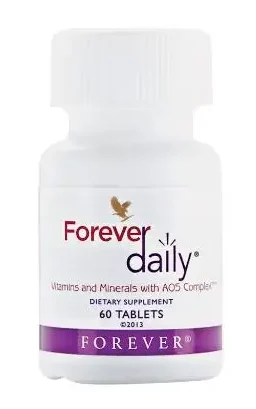
Forever Daily™
It provides a balanced blend of over 50 nutrients, including essential vitamins and minerals, plus a complex of fruits and vegetables.
If you’re looking for a high-quality daily multivitamin, consider Forever Daily™. It provides a balanced blend of over 50 nutrients, including essential vitamins and minerals, plus a complex of fruits and vegetables. It’s designed to fill common nutritional gaps and provide foundational support that complements targeted supplements like Forever Arctic Sea® and Forever Absorbent-D™.
When choosing the “best multivitamin for men” or women, look for one that provides a broad spectrum of nutrients in bioavailable forms, tailored to general adult needs, just like Forever Daily™.
Always follow recommended dosages on labels, and if you have any concerns, a quick chat with your doctor or a registered dietitian can provide personalized advice.
Step 4: Make Movement Your Mantra – Energize Your Exercise Routine.
Don’t let exercise be a chore; make it a celebration of what your body can do!
- Mix It Up: Aim for a combination of strength training (2-3 times a week), balance exercises (daily, if possible, even for a few minutes), flexibility work (daily stretches), and aerobic activity (most days of the week).
- Find Your Fun: Whether it’s dancing, gardening, swimming, cycling, or brisk walking with a friend, choose activities you genuinely enjoy. You’re more likely to stick with them.
- Start Small & Be Consistent: Even 15-30 minutes of moderate activity most days makes a huge difference. Consistency is far more important than occasional heroic efforts.
Step 5: Leverage Support & Embrace a Proactive Mindset.
We’re living in an era with an “aging population.” This means more people are living longer, and the focus is shifting towards healthy aging and maintaining quality of life – being able to live well and independently, often referred to as “aging in place.”
Taking proactive steps for your health, like the ones we’ve discussed, is your best strategy for achieving this.
While personal responsibility is key, know that there are resources available. Organizations like your local “area agency on aging,” the “department of aging,” or a “council on aging” can offer valuable information, programs, and support services. An “aging and disability resource center” (ADRC) can also be a helpful point of contact for navigating services.
However, these resources are there to support your efforts, not replace them. The power to influence your aging process truly starts with you, with the daily choices you make.
By understanding your body’s needs, making informed dietary choices, utilizing smart supplementation where necessary, and keeping your body active, you are not just adding years to your life, but vibrant, healthy life to your years.
You’re now equipped with a powerful roadmap. The next step? Addressing some of those burning questions you might still have, and then, pulling it all together into a cohesive vision for your more youthful future!
Beyond the “Miracle” – The Holistic View on “Slowing the Aging Process” & FAQs
While that “one teaspoon of miracle oil” and its powerful partners, Vitamin D and exercise, form the core of our strategy for slowing the aging process, they don’t operate in a vacuum.
To truly amplify their benefits and cultivate a life of vibrant longevity, we need to consider the bigger picture – the lifestyle choices that support your body’s innate ability to thrive.
The Unsung Heroes of Healthy Aging:
- Quality Sleep: Your Nightly Restoration Crew
Never underestimate the power of consistently good sleep. It’s during these crucial hours that your body does its most important repair work – consolidating memories, clearing out cellular debris, balancing hormones, and reducing inflammation.
Think of it as your internal restoration crew working diligently every night. Chronic sleep deprivation, on the other hand, can accelerate the aging process. Aim for 7-9 hours of quality sleep per night. The National Institute on Aging offers valuable insights into sleep and aging. - Stress Management: Taming the Age Accelerator
Chronic stress is like pouring fuel on the fire of aging. It triggers a cascade of hormonal responses that, over time, can lead to increased inflammation, weakened immune function, and cellular damage.
Finding healthy ways to manage stress is non-negotiable. This could be through mindfulness meditation, deep breathing exercises, yoga, spending time in nature, engaging in hobbies you love, or connecting with supportive friends and family. The Mayo Clinic provides excellent resources on stress management techniques. - Hydration: The Essence of Cellular Life
It sounds so simple, but adequate hydration is fundamental to every single process in your body, including those involved in slowing the aging process. Water helps transport nutrients, flush out toxins, keep your skin supple, and ensure your cells function optimally.
Don’t wait until you’re thirsty. Sip water steadily throughout the day. - Mindset: The Power of “Aging Gracefully”
Your attitude towards aging significantly impacts your experience of it. Constantly worrying about every wrinkle or fixating on “anti aging cream” solutions as the only answer can be counterproductive.
Instead, cultivate a mindset of “aging gracefully” – embracing the wisdom and experience that comes with years, while proactively nurturing your health and vitality from the inside out. A positive outlook, a sense of purpose, and continued engagement with life are powerful anti-aging tools themselves.
A Quick Word on Measuring Biological Age
Now, it’s important to touch upon something mentioned in the original article: the current state of measuring biological age.
Dr. Heidi Bischoff-Ferrari, the lead author of that fascinating DO-HEALTH trial, rightly stated, “There is no generally accepted gold standard for measuring biological age.” The science of “internal aging clocks” is still an evolving field.
However, she also noted, “we analyzed the best currently validated internal aging clocks, which reflect the state of the art.”
So, while we might not have one single, perfect measure yet, the trends observed using the best available tools are incredibly promising and give us valuable insights.
More importantly, regardless of how precisely we can measure “biological age” today, the individual benefits of optimizing your Omega-3 intake, ensuring sufficient Vitamin D, engaging in regular exercise, getting enough sleep, and managing stress are undeniable for overall health, disease prevention, and enhancing your quality of life at any age. Focus on these proven fundamentals, and you’re already winning the game.
Your Burning Questions Answered: Vitaleap’s Longevity FAQ
Alright, let’s dive into those specific questions you might have. I’ve gathered the most common ones related to Omega-3s and healthy aging to give you clear, concise answers backed by science.
What is omega-3 useful for?
Omega-3 fatty acids are incredibly versatile! As we’ve discussed, they are superstars for slowing the aging process due to their potent anti-inflammatory effects, their role in maintaining brain health and cognitive function, and their support for cardiovascular health.
They also contribute to healthy cell membranes (which means healthier skin!), good vision, and a balanced mood. Think of them as essential multi-taskers for your overall wellbeing. The NIH Office of Dietary Supplements has a comprehensive Fact Sheet for Health Professionals on Omega-3s.
What will happen if I take omega-3 everyday?
For most people, taking an Omega-3 supplement daily, within recommended dosages, is generally safe and beneficial. It helps ensure a consistent supply of these essential fatty acids that your body can’t make on its own.
This can lead to reduced inflammation, improved cardiovascular markers, better brain function, healthier skin, and support the other benefits mentioned above. Long-term, consistent intake is key for reaping the rewards in slowing the aging process. Always choose a high-quality supplement and stick to the suggested dose.
What is omega-3 fish good for?
Fatty fish like salmon, mackerel, herring, and sardines are excellent sources of the specific Omega-3s EPA (eicosapentaenoic acid) and DHA (docosahexaenoic acid). These are the types of Omega-3s most directly linked to the significant health benefits, including heart health, brain development and function, and reducing inflammation.
So, omega-3 rich fish are particularly good for directly supplying your body with these ready-to-use, powerful forms of Omega-3.
What is omega-3 recommended for?
Omega-3s are recommended for a wide range of health goals:
- Supporting cardiovascular health (reducing triglycerides, blood pressure).
- Promoting brain health throughout life (cognitive function, reducing risk of neurodegenerative issues).
- Managing inflammation (beneficial for joint health, inflammatory conditions).
- Supporting eye health (especially DHA for retinal function).
- Promoting healthy skin.
- Supporting a healthy pregnancy and infant development (DHA is crucial).
- And, as our main focus here, as a key strategy in slowing the aging process by addressing many of the underlying factors of cellular aging.
What are the benefits of taking omega-3 daily?
Taking Omega-3 daily ensures your body consistently receives these essential fats it needs for optimal function. The benefits compound over time and include:
- Sustained anti-inflammatory action.
- Ongoing support for heart and brain health.
- Improved mood regulation for some individuals.
- Healthier skin, hair, and nails.
- Potential reduction in joint pain and stiffness.
- Overall contribution to cellular health and slowing the aging process.
Phew! That’s a lot of ground covered. Hopefully, these answers provide clarity and empower you even further on your journey to slowing the aging process.
Now, let’s bring it all home and look at how you can step into a more vibrant, youthful future, starting today.
Your Invitation to a More Vibrant Future – Take the Leap with Vitaleap
This hasn’t just been an article; it’s been an exploration into the amazing potential that lies within you to influence how you age.
The most important takeaway I hope you embrace is this: slowing the aging process isn’t some far-off dream or a mythical quest for a hidden fountain.
It’s a tangible reality that you can actively shape, starting today.
You have more power than you think.
You’ve discovered that the true foundation of youthful vitality isn’t found in a jar of expensive “anti aging cream” promising to erase wrinkles overnight. While taking care of your skin is wonderful, lasting radiance, deep energy, and true “aging gracefully” comes from nurturing your body from the inside out.
It comes from understanding your cells’ needs and providing them with the right support.
That support, as we’ve seen, revolves around a few core pillars:
- The incredible, inflammation-fighting, cell-protecting power of Omega-3s.
- The immune-boosting, gene-regulating magic of Vitamin D.
- The energizing, resilience-building benefits of regular exercise.
- And, of course, the holistic habits of quality sleep, stress management, hydration, and a positive mindset that amplify everything else.
This isn’t about complicated protocols or extreme measures. It’s about making smart, consistent choices that compound over time, leading to profound changes in how you look, feel, and experience life.
Your Journey to a More Youthful You Starts With a Single Step.
I know, it can feel like a lot of information. But you don’t have to do everything all at once.
The most powerful transformations begin with one small decision, one deliberate action.
What will yours be?
Perhaps it’s deciding to finally get your Omega-3 Index and Vitamin D levels tested, so you know your personal starting point.
Maybe it’s committing to adding fatty fish to your meals twice this week, or incorporating a daily walk into your routine.
Or perhaps it’s recognizing that your diet might not consistently provide optimal levels of those crucial Omega-3s, and you’re ready to explore a high-quality supplement to bridge that gap. If that’s the case, I wholeheartedly encourage you to consider Forever Arctic Sea®. Its superior blend of EPA, DHA, and Omega-9s offers a reliable and effective way to nourish your cells from within.
Whatever that first step is for you, take it.
Vitaleap is Here to Support You.
Remember, you’re not alone on this journey. Here at Vitaleap, our mission is to empower you with credible, actionable information to help you live your healthiest, most vibrant life.
We believe in a proactive approach to wellness, blending the best of science with practical lifestyle guidance. We’re committed to being your trusted resource as you navigate your path to slowing the aging process and embracing lifelong vitality.
This article is just the beginning. Keep exploring, keep learning, and keep taking those positive steps forward.
A Final Thought From Your Guide…
I truly believe that every single person deserves to feel energetic, clear-minded, and joyful, no matter their chronological age.
“Slowing the aging process” isn’t about a desperate attempt to cling to youth. It’s about maximizing your healthspan – the number of years you live in good health, with full vitality. It’s about having the energy to pursue your passions, connect with loved ones, and embrace every new day with enthusiasm.
The power to cultivate that vibrant future is already within you. The science is clear, the path is illuminated.
Take the leap. Your future self will thank you for it.
Here’s to your health, your vitality, and aging gracefully with strength and joy!





